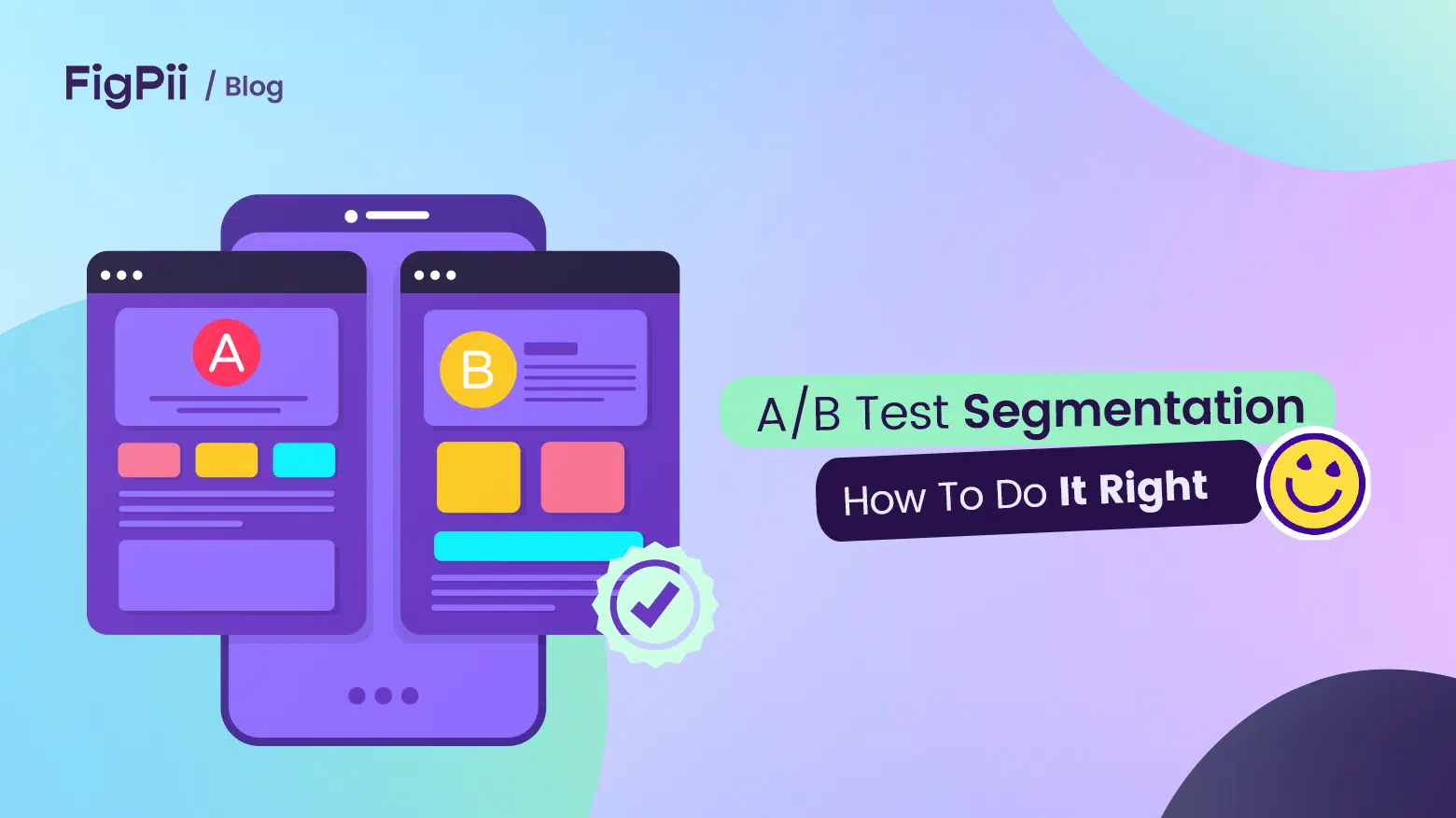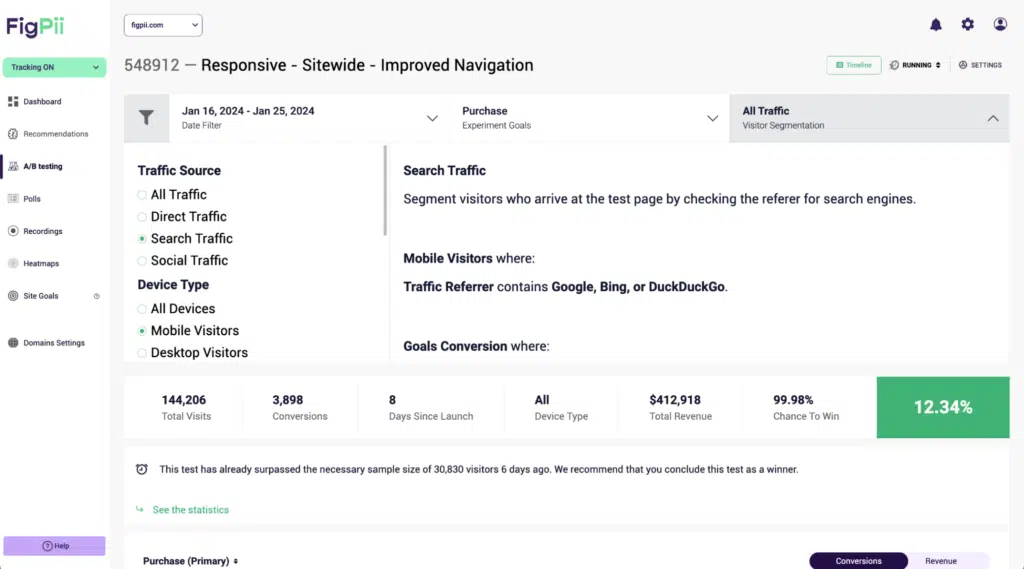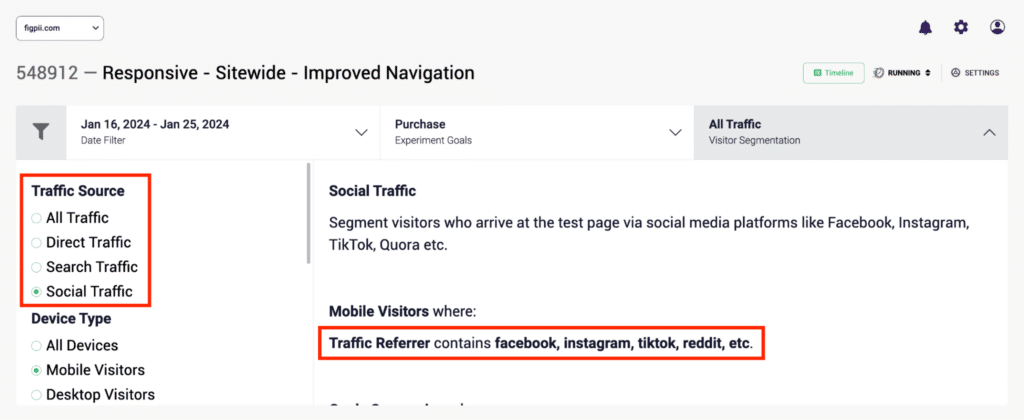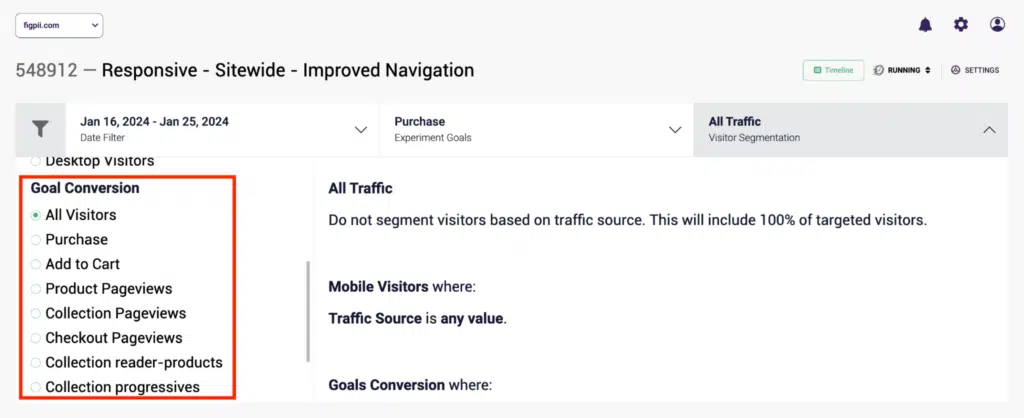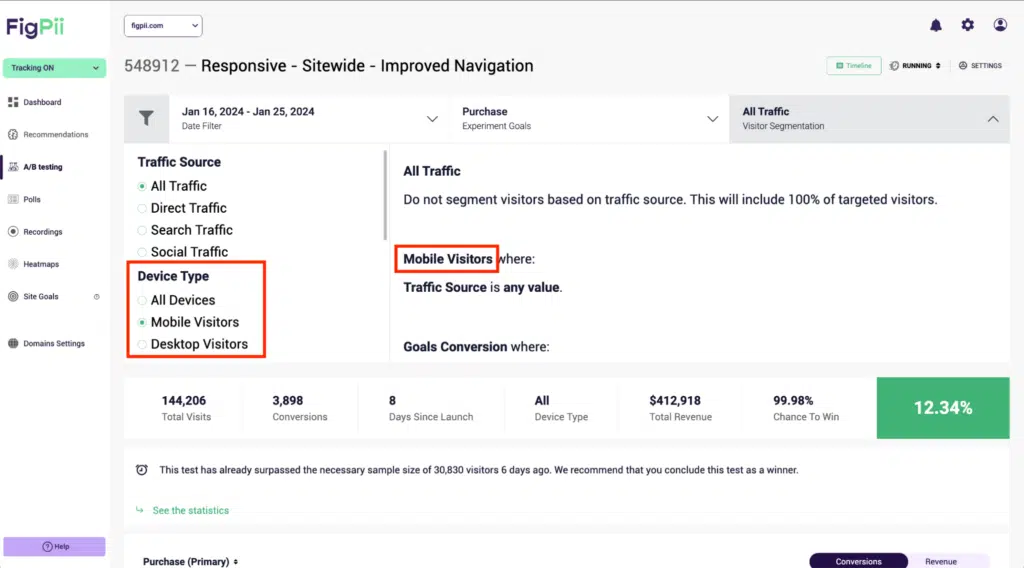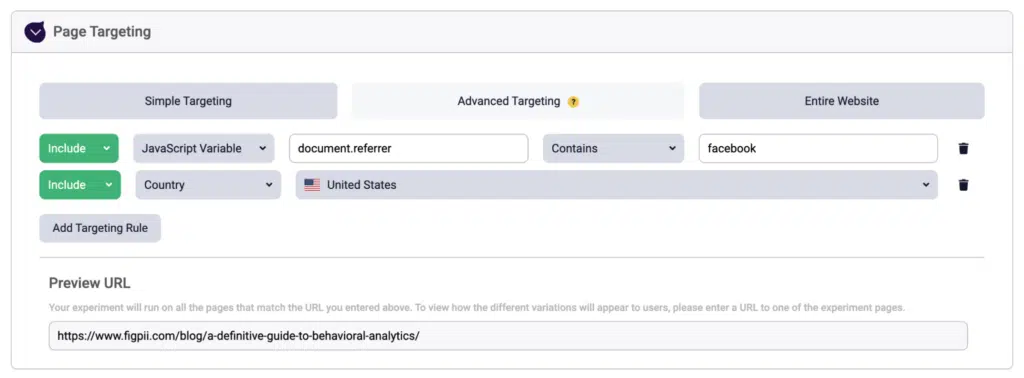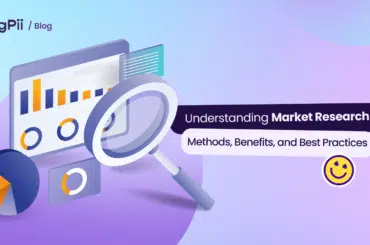Have you ever wondered how some websites seem to know exactly what you want? The secret often lies in A/B testing, which compares two web page versions to see which performs better.
But here’s where it gets really interesting: segmentation. Imagine you’re at a party. Everyone’s having a good time, but only some people like the same music. What if you could change the tunes in each room to suit the tastes of the people there? That’s segmentation in A/B testing.
It’s about creating different experiences for different groups of website visitors, ensuring that each group finds what resonates best with them.
In this article, we’re diving deep into the nuances of segmentation in A/B testing. We’ll navigate the whys, the hows, and the best practices.
What is A/B Test Segmentation
A/B test segmentation is the strategic practice of dividing your audience into smaller, distinct groups to allow for more precise targeting in your tests. Instead of applying a one-size-fits-all method, segmentation acknowledges the diversity within your audience by recognizing and catering to the unique characteristics and preferences of different user groups.
The process involves identifying meaningful ways to categorize your audience – this could be based on the –
- Demographics,
- Online behavior,
- Purchase history,
- New or returning visitor
- type of device they use to access your site.
For example, suppose you have an online store and need to test a new layout. In that case, segmentation allows you to test it specifically on returning customers or first-time visitors instead of testing a new layout on all visitors. This focused approach ensures that your collected feedback and data are relevant to each group.
The power of segmentation lies in its ability to deliver more accurate results. It enables you to understand how different groups interact with your website, providing insights that are not just generalized but deeply relevant to each segment.
This targeted testing leads to more effective optimizations, as you’re not guessing what works for your entire audience but knowing what resonates with each specific group.
How do you segment A/B Tests?
Segmenting your A/B tests effectively is key to unlocking their full potential. Let’s delve into how you can segment your tests to yield the most insightful and actionable results.
Understanding Your Audience
The first step in segmenting your A/B tests is to understand who’s visiting your website thoroughly. It’s about digging deep into your user data to uncover behaviors and preferences that define your audience.
This step is crucial because the more you know about your users, the better you can tailor your tests to their needs and interests. This analysis focuses on identifying key characteristics that differentiate your user groups. These characteristics range from age and location to browsing behavior and interaction patterns.
Understanding these nuances allows you to tailor your A/B tests more effectively. It’s about knowing who your users are and how they uniquely interact with your site.
This knowledge is the foundation of creating meaningful segments that lead to more impactful A/B testing outcomes.
Setting Clear Objectives
Once you understand your audience, setting clear objectives is the next step in segmenting your A/B tests. This involves defining what you aim to achieve with your test.
- Are you looking to increase conversions, such as boosting product sales or sign-up rates?
- Or is your goal more about improving user engagement, like enhancing time spent on a page or interaction with a feature?
Determining which audience segments are most likely to impact these objectives is also important. For example, if increasing sign-ups is your goal, focus on segments that have shown interest but have yet to commit, like new visitors or users who abandoned the sign-up process.
Examples of Objectives To Set during A/B Testing Segmentation
- For Increasing Conversions: Target users who reach the checkout page but abandon their carts. The objective could be to test different checkout processes or promotional offers to see which leads to a higher completion rate.
- For Improving User Engagement: Focus on users who spend a lot of time on informational content but don’t take action. Testing different calls-to-action or content layouts might reveal what drives these users to engage more actively.
- For Enhancing Navigation: Look at segments that frequently use the search function or have high bounce rates from the homepage. Testing variations in menu layout or homepage design could lead to insights on improving site navigation.
Selecting Segmentation Criteria
After setting your objectives, the next step is choosing the proper criteria for segmentation. This choice is pivotal because it determines how effectively you can reach and impact your target audience.
The criteria should align closely with your objectives and be measurable to ensure meaningful test outcomes.
- Demographic Segmentation: This includes age, gender, and income level. For instance, if your objective is to target a product launch, you might focus on a specific age group or gender most likely to be interested in your product.
- Geographic Segmentation: Here, you segment by country, city, or even climate zone. This is particularly useful if you’re testing market-specific strategies or your product or service has regional relevance.
- Behavioral Segmentation: This involves looking at purchase history, how users engage with your website, and how long they spend there. It’s ideal for tailoring user experience based on past interactions with your site.
- Technological Segmentation: Segmenting by device type (mobile/desktop), browser, or operating system can be crucial, especially considering the varying user experiences on different devices.
Creating Hypotheses for Each Segment
With your audience segments defined, developing specific hypotheses for each segment is next. This involves predicting how different segments might react to various test variations.
Creating these hypotheses involves a thoughtful analysis of what might motivate or appeal to each segment. For example, a hypothesis could be that a younger audience segment will engage more with vibrant, interactive elements.
In contrast, a professional segment might respond better to a streamlined layout with detailed information.
Based on these hypotheses, you would tailor test elements like CTAs, images, and layout. The aim is to make each element resonate with the targeted segment through visual appeal, messaging tone, or the overall user experience.
This approach ensures that each variation in your A/B test is not just a random alteration but a strategic modification designed to elicit a specific response from a particular segment.
Testing and Iterating
Once you’ve defined your audience segments and crafted hypotheses, it’s time to put your A/B tests into action. This phase involves a strategic approach to testing and continuous iteration, allowing you to refine your segmentation over time.
Begin by starting with broader segments and gradually narrowing them down as you gather more data. This approach ensures that your initial segmentation recognizes potentially significant segments, placing each group in the spotlight.
Moreover, be prepared to iterate on your segmentation strategies. As you conduct tests and gather results, you might discover new segments that deserve attention. Alternatively, specific initial segments can be further subdivided for more precise targeting.
Testing and iterating in A/B test segmentation are not one-time tasks but are continuous processes of refinement. This adaptability ultimately leads to more accurate and impactful outcomes in your testing endeavors.
Leveraging A/B Testing Tools
Effective A/B test segmentation goes hand in hand with the tools you use. Using A/B testing tools that offer advanced segmentation features for precise targeting ensures you can create and track experiments tailored to specific audience segments.
Moreover, it’s essential that the testing tool can track and report results separately for each segment. This functionality is the key to evaluating the performance of different segments accurately.
When you have segment-specific data, you better understand how each group responds to your variations. This level of granularity ensures that your insights are not only precise but also highly actionable.
Choosing the right A/B testing tool with robust segmentation capabilities is a strategic move that can significantly enhance the effectiveness of your testing efforts.
Pre-segmentation in A/B Testing
Pre-segmentation is a crucial step in the A/B testing process, where you divide your audience into distinct groups before launching the actual test.
This approach is grounded in using existing data or hypotheses about your audience. By analyzing past behaviors, demographic information, or purchase history, you can identify segments within your audience likely to respond differently to your website’s elements.
The role of pre-segmentation is to enable a more targeted and efficient A/B testing strategy. It’s about using the insights you already have to anticipate how various segments might react to changes on your site.
For instance, you might use pre-segmentation to differentiate between new and returning visitors, hypothesizing that each group will interact differently with a new feature or design. This foresight allows you to tailor your A/B tests from the outset, increasing their relevance and effectiveness for each specific audience group.
This method sets the stage for more meaningful test results, helping you understand and cater to different user segments’ unique needs and preferences.
Post-segmentation in A/B Testing
Post-segmentation comes into play after you’ve conducted your A/B test. It’s about diving into the A/B Test results and examining how different segments of your audience reacted to the variations in the test.
This process is essential for understanding how specific changes impacted various groups within your audience.
In post-segmentation, you break down the overall results of your A/B test into smaller, segment-specific results.
This could mean analyzing how different age groups, geographic locations, or user behaviors influenced the test outcome. For example, you might discover that a new website feature was particularly effective with mobile users but didn’t resonate as well with desktop users or that users from a specific region engaged more with a particular type of content.
The insights gained from post-segmentation can be incredibly valuable. They can reveal, for instance, that while the overall test showed a positive impact, specific segments had a negative response, or vice versa.
This level of detail helps fine-tune your website optimization strategies to cater to different audience segments’ specific needs and preferences.
In summary, post-segmentation allows you to go beyond the surface of your A/B test results, providing a deeper understanding of how different segments interact with your website and respond to changes.
When you leverage the insights from post-segmentation, you can enhance user experience, increase engagement, and ultimately drive better conversion rates across all segments of your audience.[b]
Benefits of Segmentation in A/B Testing
-
Enhanced Targeting and Personalization
In A/B testing, segmentation enables the creation of content and offers that are finely tuned to the distinct needs and preferences of different user groups.
This targeted strategy elevates the relevance of each test for its specific segment, fostering more engaging and meaningful interactions.
Tailoring experiences to align with each group’s unique characteristics deepens user connections and amplifies the impact of these interactions, enhancing overall user engagement and satisfaction.
-
Improved Conversion Rates
In A/B testing, targeting specific segments allows for a more focused approach to the factors driving those groups’ conversions. This strategy helps identify changes that positively impact different segments, leading to an overall improvement in conversion rates.
Businesses can effectively enhance their strategies for better conversion outcomes by tailoring tests to each segment’s unique characteristics and behaviors.
-
Deeper Insights into Customer Behavior
Segmentation in A/B testing offers a window into how different groups interact with your website, providing deeper insights into customer behavior.
This approach goes beyond surface-level analytics, delving into the ‘why’ behind user actions. By observing how distinct segments respond to various changes on your site, you better understand their preferences, motivations, and pain points.
This depth of knowledge is invaluable for making more informed decisions about website design, content, and features, ultimately leading to a more user-centric and effective online presence.
-
Risk Mitigation
Conducting tests on segmented groups is a key strategy for minimizing risk when introducing new features or changes.
It confines potential negative impacts to a smaller, controlled segment of your user base rather than risking a broader, possibly adverse effect. It enables safer experimentation with new ideas, allowing for the careful refinement of these concepts based on specific group feedback.
This method is essential in maintaining a stable and positive overall user experience while allowing for innovation and improvement.
-
Long-Term Customer Value Optimization
Long-Term Customer Value Optimization in A/B testing through segmentation focuses on enhancing customer relationships over time. This approach helps develop products and services that resonate more with specific customer groups, ensuring repeated business and a stronger connection.
Segmentation also allows for more effective communication, as different groups may prefer different messaging styles. Understanding these preferences can make your marketing more impactful.
Best Practices for Effective Segmentation is A/B Testing
-
Start with Clear Objectives
A clear game plan is essential when gearing up for A/B testing. Think about what you aim to achieve with your tests. Maybe you want to increase sign-ups, boost sales, or enhance user engagement on your website. Whatever your goal, understanding it is key.
-
Use Data to Inform Segmentation
Diving into A/B testing without data is like trying to hit a bullseye in the dark. You must base your segmentation on solid data and analytics to make it count. It’s all about understanding who your users are and what they want.
Start by analyzing user behavior. This includes how they interact with your website, what pages they visit the most, and where they spend the most time.
Then, look at demographics like age, location, or even the device they use to browse. These details paint a clearer picture of your audience.
Remember, the more informed your segmentation is, the more relevant and practical your A/B tests will be.
-
Keep Segments Manageable
Regarding segmentation, it’s easy to get carried away. But here’s an essential tip: keep your segments manageable.
Creating too many segments can make your analysis more complex than it needs to be. Plus, it can dilute the clarity of your results.
Think of it this way: if you have a dozen segments, it’s not only a challenge to track and analyze all of them, but it’s also harder to draw precise, actionable insights.
You might have a lot of data but only a little useful information. So, focus on key segments that will give you valuable insights.
-
Balance Broad and Narrow Segmentation
Striking the right balance in segmentation is key in A/B testing. You need to blend broad and narrow segments to get a complete picture.
Broad segments give you a general overview. They’re great for capturing overarching trends across a larger audience. Imagine you’re looking at your entire customer base to see general patterns in purchasing behavior. This broad approach helps identify widespread trends that apply to most of your users.
Conversely, narrow segments let you zoom in on specific behaviors or characteristics. You may be focusing on customers from a specific region or those who visited a particular page on your website. These narrow segments offer a detailed understanding of specific user experiences and preferences.
Both approaches have their place in A/B testing. Broad segments help you see the big picture, while narrow segments provide depth and detail.
-
Ensure Statistical Significance
When segmenting for A/B testing, it’s crucial to base your segments on enough customer data to ensure statistical significance. This means each segment should be large enough to yield reliable results that accurately reflect the behaviors and preferences of that group.
Caution is key with smaller segments; they might not provide enough data to reach statistically significant conclusions and could lead to interpretations that don’t accurately represent your broader customer base. Balancing the size of your segments with the quality of your data is essential for drawing meaningful and actionable insights from your A/B tests.
-
Consider Segment Interaction
When working with multiple segments in an A/B Test, it’s important to understand how these segments interact and influence each other. It’s not just about looking at each segment in isolation; it’s about seeing the bigger picture of their relationships.
Imagine your segments as different circles in a Venn diagram. Some of these circles might overlap. This overlap is where you need to pay extra attention.
For example, some users fall into both categories if you have a segment based on age and another on geographic location. Understanding this overlap helps you avoid running tests that might conflict with each other or give you redundant information.
Over To You
Good segmentation in A/B testing validates business assumptions, uncovers potential new product areas, and offers a deeper understanding of your audience.
It’s not just about what works in the test but what makes sense for sustainable business growth and customer engagement.
This approach ensures that each test contributes to a comprehensive strategy, blending clear results with strategic business insights.

